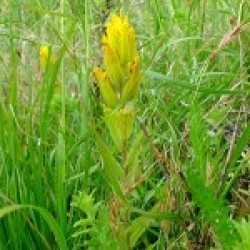
Lisa Cheung
Biology
Carleton College
I grew up in Chinatown of Chicago and went to school on the South Side. Going to college in a rural town is both an interesting and challenging experience for me but it is definitely enjoyable. I don't have a favorite food/dish, but I love playing soccer and enjoy cooking. My favorite television show is currently Castle and Perception and I enjoy most genres of music, although I am still quite picky. My all-time favorite thing to do is to learn about other people's and country's culture so that I can expand my knowledge of these different cultures and partake in spreading them.

Hybridization concerns for restoration of threatened Indian Paintbrush (2015)
Ecology, Genetics
Background:
Castilleja levisecta, also known as the golden Indian paintbrush, is an endangered flowering plant restricted in the Pacific Northwest. This species is undergoing restoration in prairies native to another Castilleja species, C. hispida, which is a host plant for endangered Taylor checkerspot butterflies (Euphydryas editha taylori). However, it has been observed that hybridization of the two Castilleja can occur and although the hybrids can potentially be a host for the checkerspot butterflies, the hybridization of the two pure Castilleja can extradite C. levisecta. Therefore, we would like to know to what extent is hybridization occurring but we need to also know what the differences are between the two.
Scientific Question:
Can we use the available microsatellite markers to get a known fingerprint region specific to C. levisecta and a known fingerprint region specific to C. hispida? If so, can we find an intermediate pattern in hybrids?

